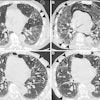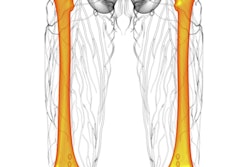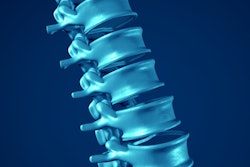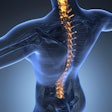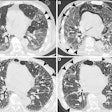
Preoperative quantitative CT (QCT) scans in patients about to receive spinal fusion surgery show that many have low bone density that was previously undiagnosed, according to research presented March 12 at the annual meeting of the American Academy of Orthopaedic Surgeons (AAOS) in Las Vegas.
Nearly half of the 296 consecutive lumbar fusion patients were diagnosed from their lumbar spine QCT exam with osteoporosis or its precursor, osteopenia -- for the first time -- researchers from the Hospital for Special Surgery (HSS) in New York City found. What's more, some of these patients had previously received a dual-energy x-ray absorptiometry (DEXA) bone density scan.
"We believe that QCT is more effective in screening patients because the [DEXA] scan can overestimate bone density in the spine due to certain bone changes, a patient's weight or physique, and other factors," said senior author Dr. Alexander Hughes in a statement from HSS.
The research project included 296 patients receiving lumbar spine fusion for a degenerative condition or spinal instability. The participants had a mean age of 63, with an age range of 21 to 89, and 55% were female.
Based on American College of Radiology criteria, 44% of the patients were diagnosed with osteopenia and 15% were diagnosed with osteoporosis based on their preoperative QCT scan. The remaining 41% were deemed to have normal bone density.
While the researchers found that gender or race did not affect prevalence, patients over 50 were much more likely to be diagnosed with low bone density. In this group of patients, 49% were diagnosed with osteopenia and 18% had osteoporosis.
The researchers also analyzed a subgroup of 212 patients who had no prior history of low bone density. In these patients, 39% were diagnosed with osteopenia and 10% were diagnosed with osteoporosis from the QCT study.
"Spine surgeons should be aware of the high prevalence of abnormal bone mineral density in lumbar spine patients and the possibility that those without a previous diagnosis may have osteopenia or osteoporosis," Hughes said. "Diagnosing this prior to spine fusion could lead to a change in surgical planning and treatment, and we believe this would improve outcomes."




